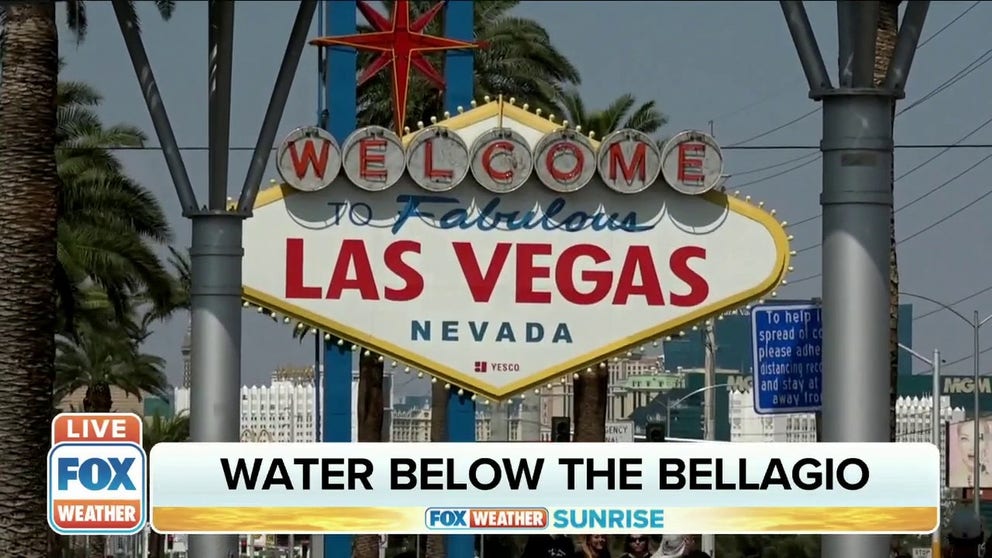Ongoing drought adds fresh challenge to getting water to Las Vegas
Host to over 41 million visitors a year, Las Vegas is bustling. But with an annual rainfall total under 4 inches, how does this desert oasis quench the masses and sustain itself, keeping water flowing and business thriving?
Drought-stricken Las Vegas keeps water flowing, business thriving
The drought in Las Vegas is impacting Sin City. FOX Weather's Robert Ray heads to the Bellagio resort to learn more.
LAS VEGAS -- The glitzy international city of Las Vegas and its million of lights is considered the brightest spot on Earth, while existing in the arid Mojave Desert Valley.
Host to over 41 million visitors a year, Vegas is bustling, but with annual rainfall totals under 4 inches, how does this desert oasis quench the masses and sustain itself, keeping water flowing and business thriving?
"Las Vegas was originally settled because of the aquifers and there were artesian springs that were coming out close to the downtown," says Matthew Lachniet, UNLV climate scientist. "Those wells and springs are giving us about 10% of our water supply that we use in Las Vegas."
But in recent years, the city has been dry, even by their standards.
"We really have been drying for the last 20 years or so and it's been a pretty long term drought," Lachniet said. "We had a couple years here and there, where it becomes a little wetter but overall it's been really very dry."
Resorts along the Las Vegas strip are some of the most efficient water users. The famous Bellagio fountain uses the underground wells to put on a show every hour, 365 days a year.
Nearby, at Lake Mead and the Hoover Dam, where 90% of the Vegas water supply comes from, courtesy of the mighty Colorado river, the drought is challenging the water distribution system.
"Early engineers designed the system to store roughly four years of the Colorado River's flow," said Mike Bernaro with the Bureau of Reclamation. "Without the storage here in Lake Mead and upstream in Lake Powell, we would be very hard-pressed to get through these drought conditions."
20 miles north of Vegas is where the ancient groundwater moving readily though the valley's loose gravels and sands exist; there you'll find sediments of the aquifers with underground water systems protruding all around. These are the same kind of scenes people saw in Las Vegas when the populated the area 100 years ago.
"One of the things we have learned is that nature is capable of being even drier than it is today and we can have aridity that extends for hundreds if not thousands of years," Lachniet said. "That tells us what nature is capable of, and adding any human influence amplifies any shortages of water in the future."
For the gambling center of the world, water could just be the most complicated and risky bet in town. And though the aquifers provide only 10% of the supply here, they continue to pay out, giving the entertainment capital of the world a fighting chance at sustainability.
